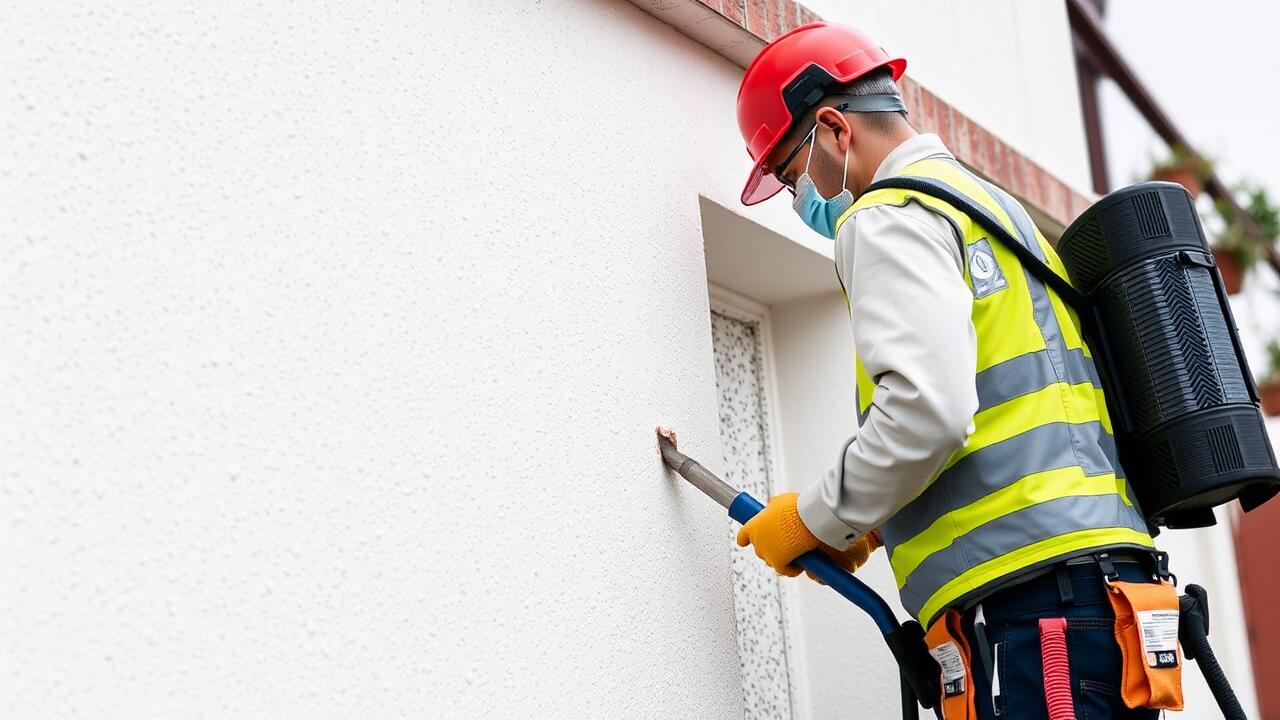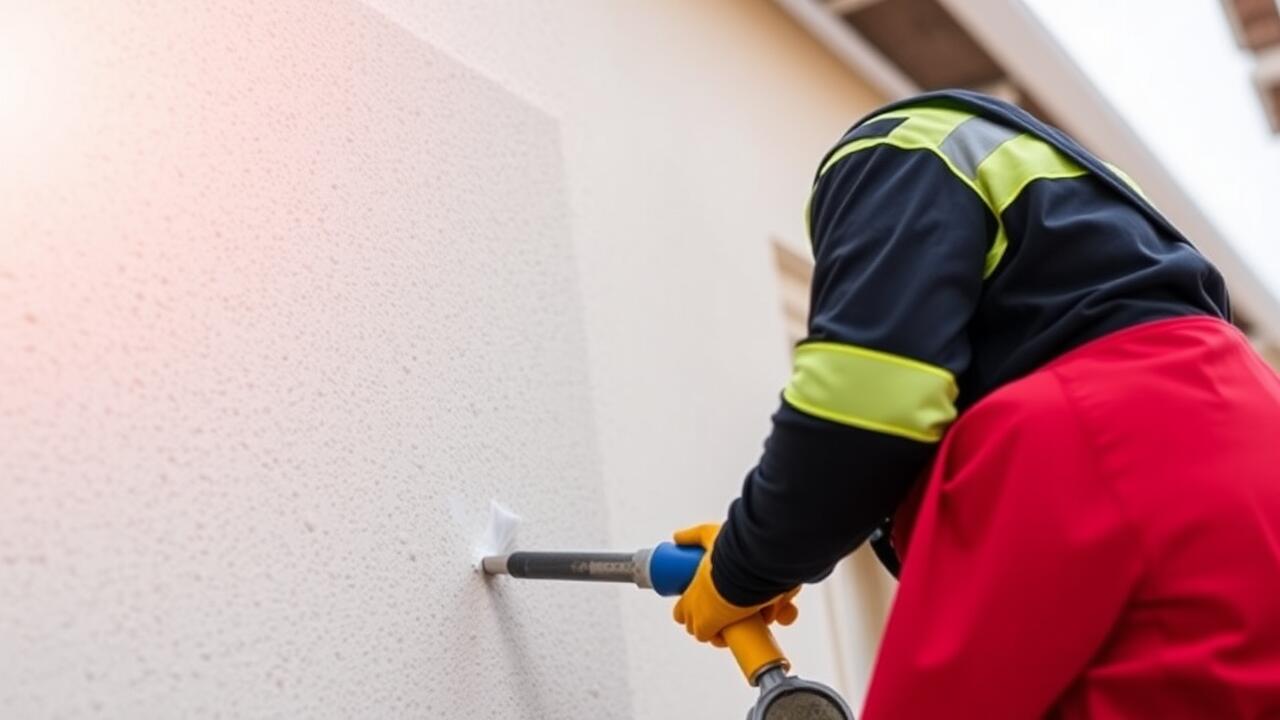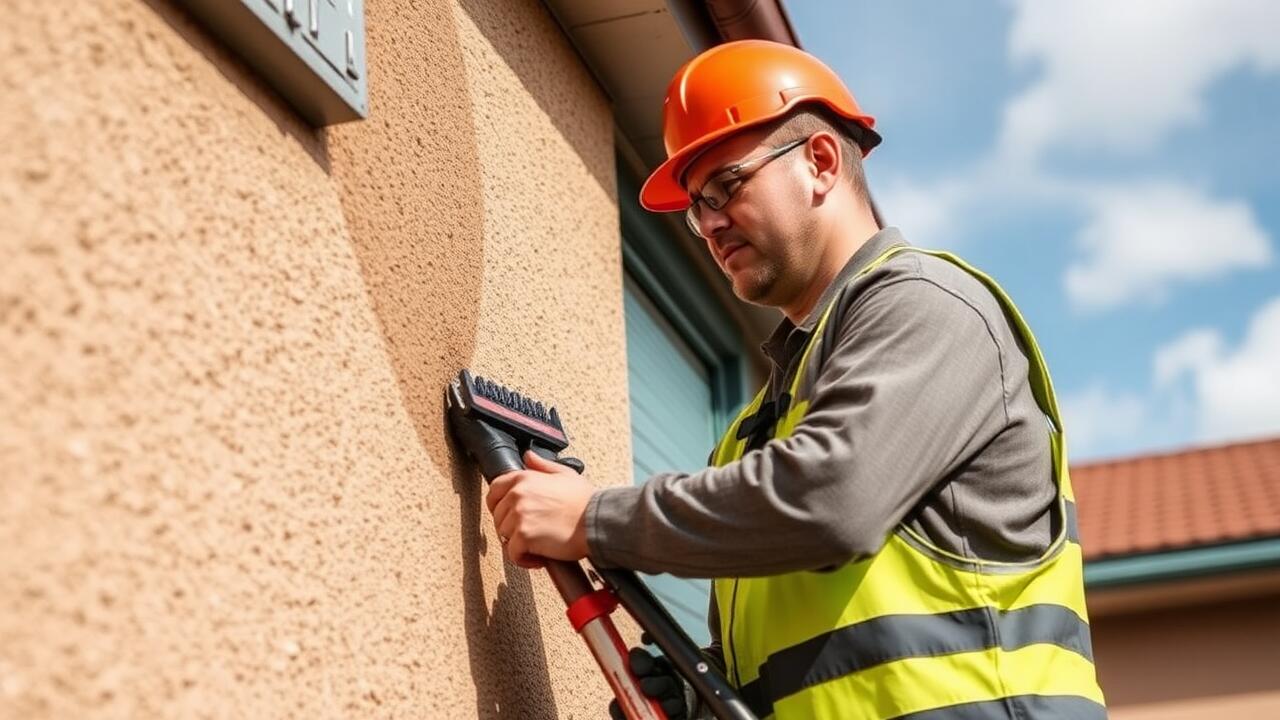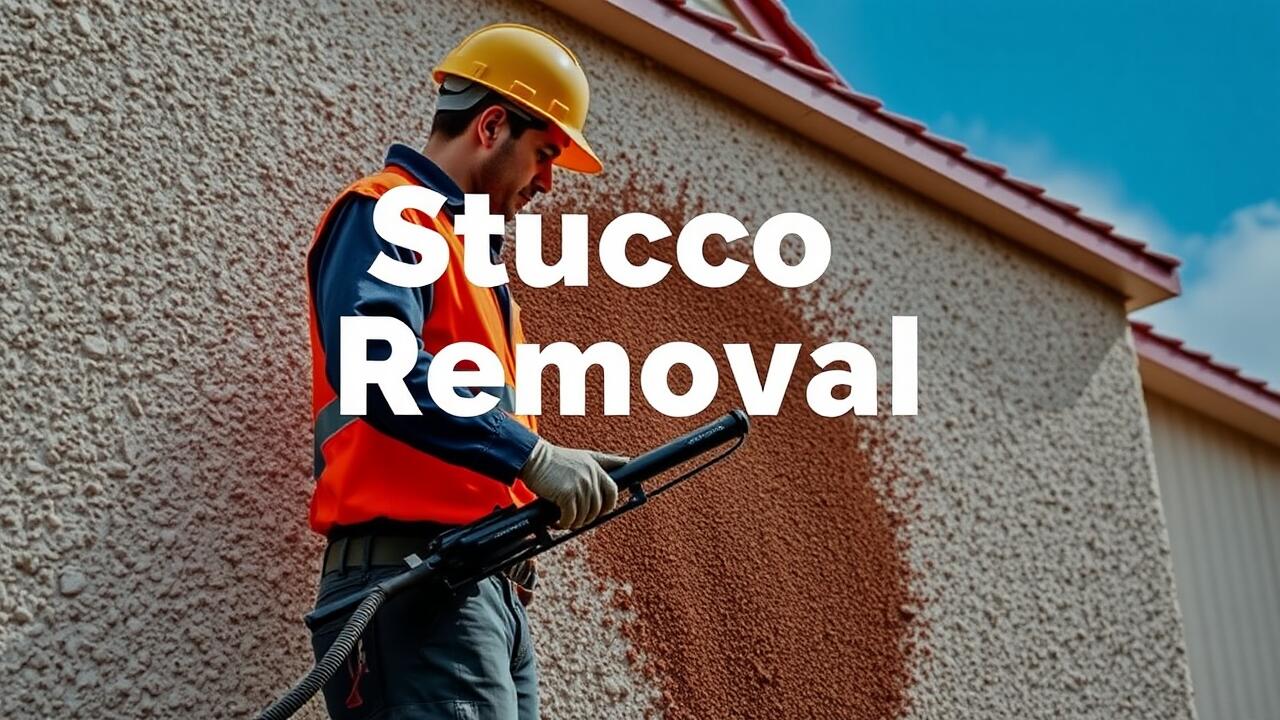
Step-by-Step Guide to Using a Heat Gun
Using a heat gun effectively for stucco removal begins with proper preparation. Gather necessary materials including safety goggles, gloves, and a putty knife. Ensure the work area is clear of debris and flammable materials. Set the heat gun to a low setting initially to test the optimal temperature for softening the stucco without damaging the underlying structure. Position the gun approximately six inches from the surface and move it back and forth in small sections to evenly apply heat.
As the stucco begins to soften, use the putty knife to gently scrape away layers. Exercise patience during this process; it may take a few applications of heat to achieve the desired result. For those undertaking stucco removal in Westlake, Los Angeles, consider the local climate which can affect the efficiency of your heat gun. If the environment is particularly humid, additional care may be needed to control moisture levels as you work.
Effective Techniques for Stucco Removal
To achieve effective stucco removal, using a heat gun requires careful technique. Start by selecting an appropriate temperature setting on the heat gun, typically between 800 and 1,000 degrees Fahrenheit. Hold the heat gun several inches away from the stucco surface, moving it in a steady, horizontal motion. The goal is to gently heat the stucco until it softens, allowing for easier removal. For those undertaking stucco removal in regions such as Westchester or Los Angeles, proper ventilation and protective gear are essential to ensure safety and comfort.
In addition to methodical heating, employing the right tools will significantly enhance the stucco removal process. A flat scraping tool can help lift the softened stucco away from the wall without damaging the underlying structure. When attending to corners or intricate designs, smaller tools may provide better access. Cleaning the area periodically and removing dust and debris will ensure that the new surface adheres properly once the removal is complete. Utilizing these techniques will lead to a more efficient stucco removal experience in places like Westchester, Los Angeles.
Common Challenges in Stucco Removal
Removing stucco can present a variety of challenges that often frustrate homeowners and contractors alike. One significant obstacle is the adhesive strength of the stucco, which can make it difficult to detach from the underlying surface. Factors such as the age of the stucco, the type of materials used in its application, and weather exposure can further complicate the process. In regions like Westlake, Los Angeles, where environmental conditions vary, the stucco may bond tightly to the substrate, requiring extra effort and the right tools for effective removal.
Another challenge lies in the potential damage to the underlying walls or structures when using various removal techniques. A heat gun can help soften the stucco but can also risk scorching or damaging the surface beneath if not used carefully. In addition to this, dust and debris generated during the procedure can create health hazards or complicate cleanup efforts. Proper preparation and protective measures are necessary to ensure a safer and more efficient removal process in projects such as Stucco Removal Westlake, Los Angeles.
Troubleshooting Issues with Heat Gun Usage
When using a heat gun for stucco removal, one common issue is uneven heat distribution. This can lead to certain areas not softening while others become excessively heated, potentially causing damage to the underlying surface. Keeping the heat gun moving in a consistent manner helps mitigate this problem. It’s also essential to adjust the temperature based on the thickness of the stucco being removed, as thicker layers may require a higher setting to effectively loosen the material.
Another challenge is managing the debris produced during stucco removal. As the heat gun works to loosen the stucco, it can create a mess that needs to be contained and cleaned up afterward. Having drop cloths or tarps laid out can simplify the cleanup process. For those considering professional services, resources like "Stucco Removal Westlake, Los Angeles" can guide the selection of qualified contractors experienced in this type of work. Proper preparation and awareness of these challenges significantly enhance the overall effectiveness of using a heat gun.
Alternatives to Heat Guns for Stucco Removal
For those seeking alternatives to heat guns in the stucco removal process, several methods can prove effective. Chemical strippers specifically formulated for stucco can loosen surface layers without the need for heat. These products penetrate the material, making it easier to scrape off. While they may require more time to work compared to heat, they can minimize dust and debris, providing a cleaner removal experience.
Another option involves the use of mechanical scrapers or grinders. These tools can effectively remove stucco when applied correctly. The challenge lies in the potential for damaging underlying structures if not used carefully. This method might be especially viable in regions like Westlake, Los Angeles, where various homes may feature different stucco applications. Choosing the right alternative ultimately depends on the project's specific requirements and constraints.
Comparing Methods and Their Effectiveness
When considering the methods for stucco removal, heat guns stand out for their efficiency and precision. Many professionals in the industry recognize the advantages of using a heat gun, especially for targeted areas where control is essential. Its ability to soften stucco without excessive damage to the underlying structure makes it a preferred option for projects in regions like Stucco Removal Westlake, Los Angeles. While the process requires vigilance to prevent overheating, users often find that a heat gun provides a cleaner removal compared to other methods.
In contrast, traditional methods like chiseling or using a pressure washer can lead to greater collateral damage or a messier workspace. While these methods might be effective for larger areas, they often require more cleanup and repair afterward. In areas such as Stucco Removal Westlake, Los Angeles, where the preservation of the underlying walls is crucial, the selective approach of a heat gun may yield better long-term results. Each method has its set of advantages and challenges, guiding professionals and homeowners alike towards deciding what's best for their specific stucco removal needs.
FAQS
What is a heat gun and how is it used in stucco removal?
A heat gun is a tool that emits a stream of hot air, which can soften stucco for easier removal. It is used by directing the hot air onto the stucco surface, allowing the material to become pliable before scraping it off.
Are there any safety precautions to take when using a heat gun?
Yes, it is important to wear appropriate safety gear, including heat-resistant gloves and goggles. Ensure the area is well-ventilated and keep flammable materials away from the heat gun while in use.
How long does it take to remove stucco using a heat gun?
The time it takes to remove stucco with a heat gun varies depending on the thickness and condition of the stucco. Generally, it can take several hours to complete the removal of a large area.
Can I use a heat gun on all types of stucco finishes?
While heat guns are effective on most stucco finishes, it’s recommended to test a small area first. Some finishes may react differently, and excessive heat may damage the underlying surface.
What are some alternatives to using a heat gun for stucco removal?
Alternatives include using a pressure washer, chemical removers, or manual tools like chisels and scrapers. Each method has its pros and cons in terms of effectiveness and ease of use.


